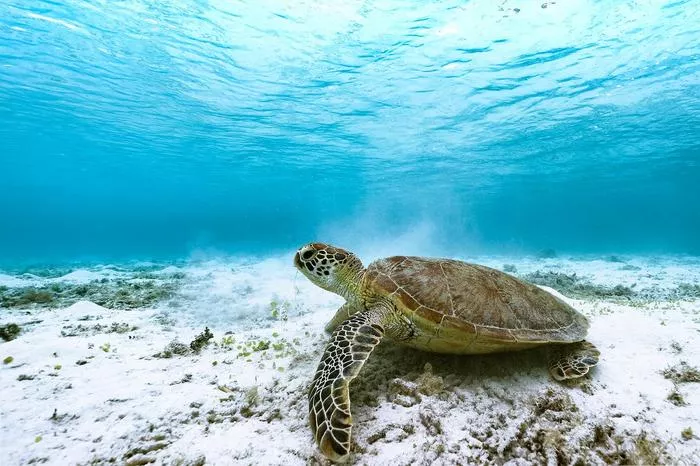Pollution aggravates gender imbalance of green sea turtles
Besides rising sea temperatures that cause more females to be born, green sea turtles are also threatened by pollution.
In the northern part of the Great Barrier Reef, hundreds of female green sea turtles are born for every male, as a result of climate change. A study has found that pollution may further worsen this gender bias, pushing the species closer to extinction.
Published in the journal Frontiers in Marine Science, the findings describe how exposure to heavy metals like cadmium and antimony and certain organic contaminants can cause more female green sea turtles to be born.
“We studied the effects of pollution on the development of green sea turtles at a long-term monitoring site on Heron Island, a small coral sand cay in the southern Great Barrier Reef, where between 200 and 1,800 females come to nest every year,” said researcher Dr Arthur Barraza, from the Australian Rivers Institute at Griffith University.
The research was conducted as part of WWF-Australia’s Turtle Cooling Project, and examined the long-term effects of pollution on the species' development.
Research details
In the study, the researchers collected 17 clutches of eggs within two hours of being laid and reburied them next to probes recording the temperature every hour inside the nest and at the beach surface.
When the eggs hatched, they checked the hatchlings' gender and measured their levels of 18 metals, as well as organic contaminants like polycyclic aromatic hydrocarbons (PAHs), polychlorinated biphenyls (PCBs), and polybrominated diphenyl ethers (PBDEs).
A majority of heavy metals originate from human activities like mining, runoff and urban waste pollution. “These contaminants are all known or suspected to function as ‘xenoestrogens’ or molecules that bind to the receptors for female sex hormones,” said senior author Dr Jason van de Merwe, a marine ecologist and ecotoxicologist at the Australian Rivers Institute.
These xenoestrogens bind to female sex hormone receptors and accumulate in female turtles during foraging. Then, as eggs develop, they are absorbed, and disrupt the normal developmental pathways. They mimic the function of the hormone estrogen and increase the tendency for the hatchlings to be born female.
Extinction threat
“As the sex ratio gets closer to 100% females, it gets harder and harder for adult female turtles to find a mate, which is particularly important in the face of climate change already making nesting beaches warmer and more female-biased.”
The study calls for the implementation of science-based, long-term strategies to mitigate ocean pollutants, while recognising the urgent need to safeguard the species from multifaceted environmental threats.




























